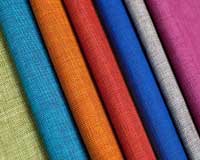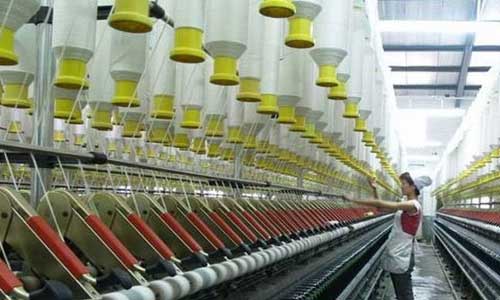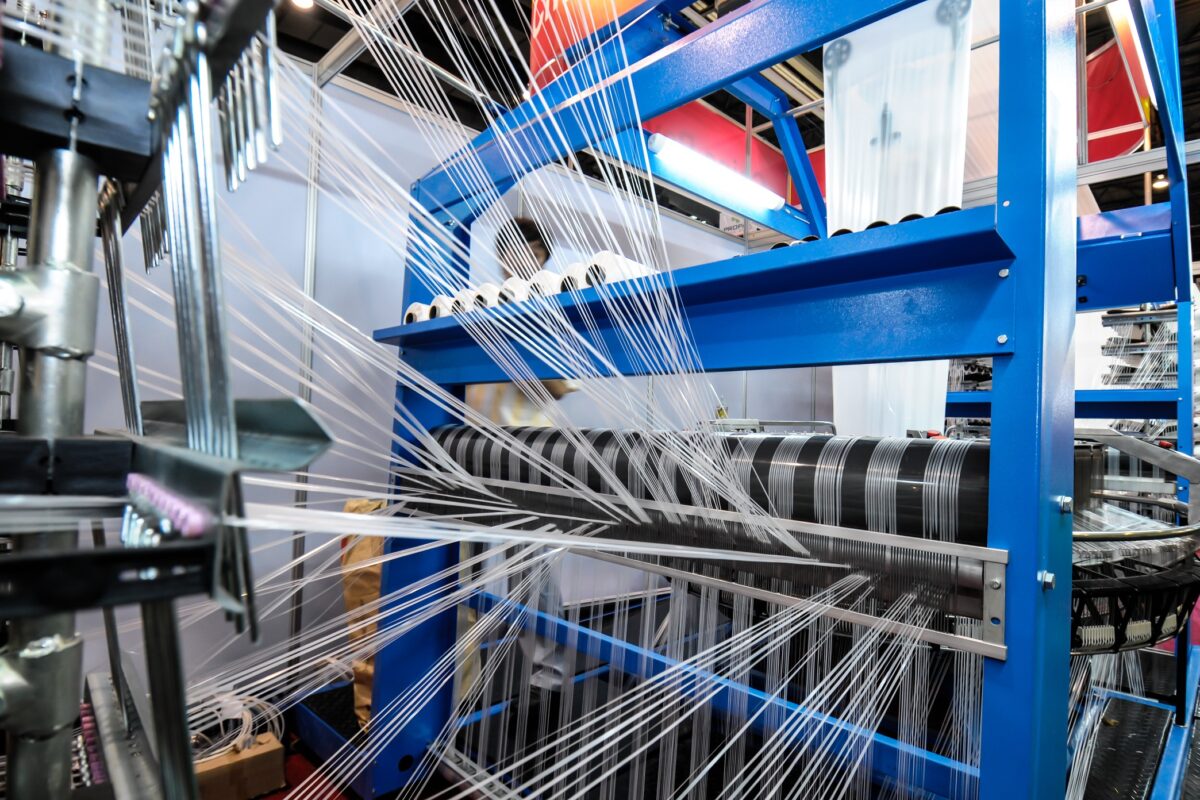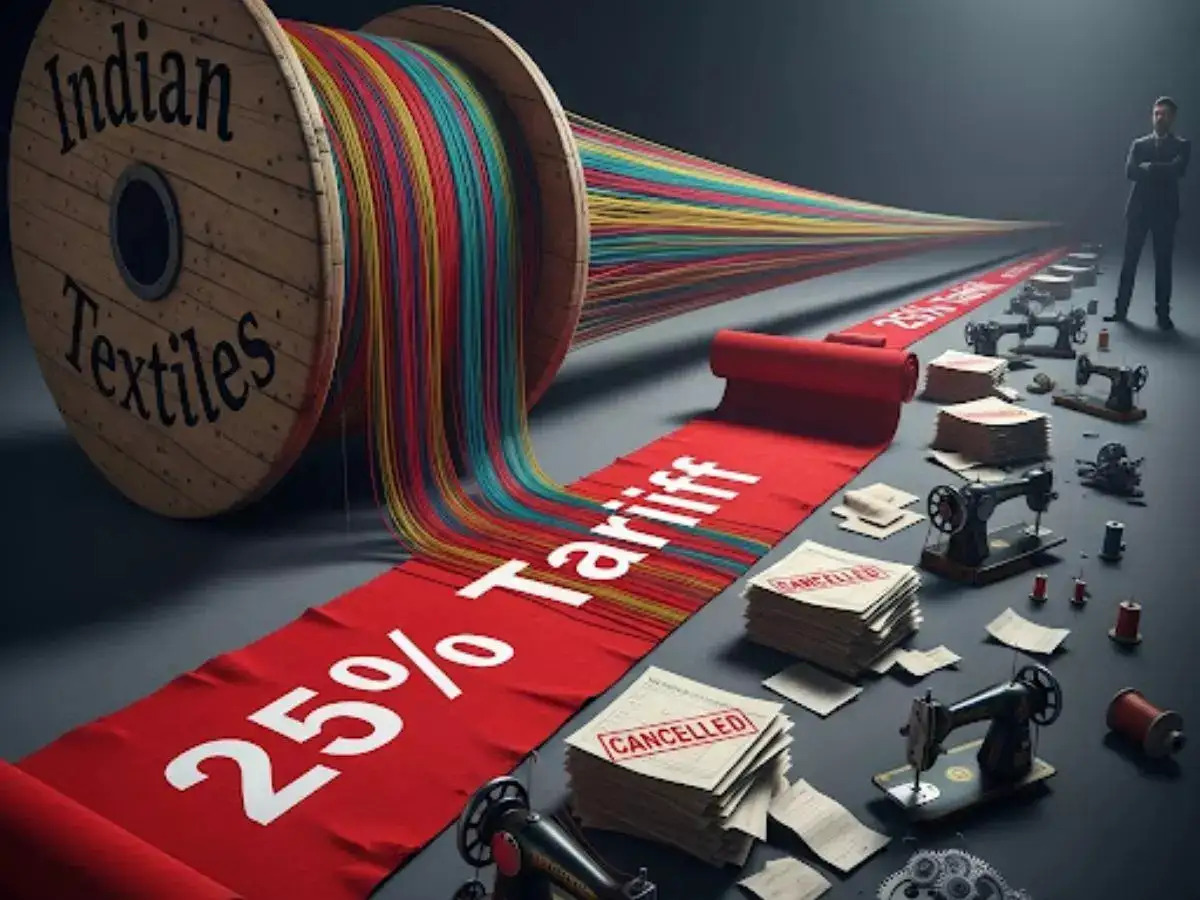FW
Ethiopia's textile and garment sector export revenue during the fiscal year 2016-17 that ended on July 8 was a third of planned revenue. Ethiopia earned $89.3 million out of a the estimated goal of US$271 million during the previous Ethiopian fiscal Year. Despite the below expectation performance, Ethiopia plans to become the top textile manufacturing country in Africa.
As Assefa Tesfaye, Corporate Communications Director at Ethiopia Ministry of Industry (MoI) , insufficient supply of inputs, delay in commissioning several industries contributed to the underachievement of textile sector. Ethiopia is building or has commissioned more than a dozen industrial parks across the country with a view to become a light manufacturing hub in Africa by 2025 especially in textile and garments.
It in particular Ethiopia had its ambitions set on the Hawassa Industrial Park, located in southern part of Ethiopia, to revolutionize its budding textile and garment sector. However, the Ethiopian ministry of industry says a pause in commissioning some textile and garment plants in the Hawassa Industrial Park contributed to the disappointing export results. Once operational at full potential, the park is expected to generate $1 billion for Ethiopia mainly from textile and garment products.
Noida-based Escott Apparels offers knitted fabric and digital printing services. The firm is looking to expand its digital printing capacity as it has already got the good infrastructure for pre- and post-processing services, increased capacity will further help it serve clients better.
Working as a job worker for digital printing, Escott currently has a printing capacity of 1,500 meters a day. The company now plans to more than double its print production to nearly 4,000 meters a day. Escott treats digital printing as a commodity rather than fashion to get volume orders. Despite challenges and cost issues involved in digital printing, job work units like Escott Apparels are expanding their digital printing capacities by investing in new and advanced printers. Global digital textile printing equipment and ink sales are projected to grow 39 per cent by 2018.
As an alternative to PVC vinyl and rigid materials, printed textiles are versatile and appeal strongly to commercial customers. They typically find the softer, sleeker look and feel and more natural, fluid movement of textiles aesthetically appealing – whether for soft signage and graphics in retail, hospitality, or event environments.
The shift towards digital textile printing is also enabling new levels of customization and increased design complexity.
Sales from China’s State Reserve remain strong with cumulative sales since the start of auctions on March 3 reaching over 10 million bales this week. About 30,000 tons have been offered for sale each business day with a base price calculated from the average of internal and world prices over the previous weeks. Daily sales rates have varied widely with much of the fluctuation due to buyers’ expectations of changes in the base price.
Sales have been split almost equally between cotton from the 2012 and 2013 crops, while sales from the 2011 crop account for only three per cent of the total. Purchasing has been evenly split between spinners and traders.
Demand has been strong for cotton from Xinjiang with over 99 per cent of its cotton offered being sold, amounting to just over 60 per cent of total sales. This is in stark contrast to cotton from the eastern provinces which, overall, has represented less than 40 per cent of the cotton sold. Furthermore, sales rates in the eastern provinces vary greatly. The determining factor for eastern sales appears to be the location of warehousing, while quality factors, such as length or color grade, are less influential.
Canadian brands are focusing on creating wealth through the local fashion industry. Their emphasis is on non-manufacturing, high value-added parts of the global apparel value chain. This includes activities such as design, research and development, branding, merchandising, marketing, logistics and distribution.
Canadian brands have created more value on an absolute and per capita basis when compared with British brands and also trade at the highest average price-to-sales ratio, which is because of higher revenue growth rates. Canada has a growing pool of expertise in major industries such as technology. There are many opportunities for collaboration between fashion and other industries to drive innovation, particularly as it relates to textile research and development, branding and logistics.
Investments in Canadian private apparel and accessory companies have declined at 1.4 per cent since 2006. During the same period, investments in the United States increased 7.2 per cent. Being able to attract capital as a young designer is the first step toward building a big business, and Canada’s private investment community needs to wake up to the opportunity in fashion.
Over the past few years, the advent of new media platforms, a global shift in manufacturing to Asia and a new-found cultural awareness attributable to globalization have presented Canadian fashion designers with a variety of opportunities. These trends have enabled new avenues for international exposure and a chance to run leaner businesses operations.
With GST, trade between India and Bhutan has slowed down. For one, GST has rendered the items Bhutan exports to India costlier and those that the country imports from India cheaper. Bhutan is worried that this may result in a spike in imports, depleting the country’s rupee reserves.
In case of exports and imports, GST is levied at the entry points and not at the point of sales. Bhutan wants India to allow it to levy the tax at the point of sales. In fact, the country has stopped imports of vehicles from India for want of legal clarity on how GST can be imposed.
Bhutan may lose up to Rs 140 crores a year as the GST regime puts an end to excise duty refunds. The loss may widen to Rs 290 crores once petroleum comes under the GST ambit. Also the huge amount of paper work is rendering the movement of consignments painful.
Bhutan’s economy has strong links with India since India is the key transit route for its goods and an important trading partner. As much as 90 per cent of Bhutan’s imports come from India and these include cooking gas, fuel and kerosene which are at a subsidised rate.
"Functional textile is Taiwan’s forte amid stiff competition from its Asian counterparts. This has been possible because of its strong thrust on R&D, advancements in manufacturing capabilities and cross-industry collaborations. Taiwan today accounts for about 70 per cent of the world’s functional fabrics, and is the sixth largest textile exporter globally. For years, Taiwanese suppliers have been offering efficient, friendly services and a wide range of high-quality fabrics at competitive prices, which has boosted its business."

Functional textile is Taiwan’s forte amid stiff competition from its Asian counterparts. This has been possible because of its strong thrust on R&D, advancements in manufacturing capabilities and cross-industry collaborations. Taiwan today accounts for about 70 per cent of the world’s functional fabrics, and is the sixth largest textile exporter globally. For years, Taiwanese suppliers have been offering efficient, friendly services and a wide range of high-quality fabrics at competitive prices, which has boosted its business.
A strong player in sports apparel segment

With lifestyle changes, and workout becoming a part of daily routine and sportswear has emerged a strong category globally. With a boom in performance apparel sector, product lines have expanded, and a host of new brands have emerged. Taiwan’s apparel industry has directly benefited from the growth of brands like Under Armour and Lululemon, and the steady sales of giants like Nike and Adidas.
Taiwan is giving tremendous competition to countries like Japan and Korea. The signing of the China-Korea Free Trade Agreement in 2015 has increased pressure on Taiwan’s textile industry because China remains the biggest export market for the country. With Vietnam’s inclusion (and Taiwan’s exclusion) in the Trans Pacific Partnership Agreement (TPPA), there are possibilities of shifting business to Southeast Asia, owing to lower tariffs, cheap labour and improved manufacturing capabilities. To circumvent this scenario, Taiwan has to work on differentiation strategy by developing a focused and strategic position in the market.
A three-layered approach to branding
To build a higher-value position in functional textiles, Taiwan needs to take a three-layered approach.
Global-facing companies across the textile supply-chain in Taiwan need to consider and understand their real value in the world of functional textiles. They need to understand their competitive advantages, and build on their strengths. The biggest victory lies in communicating these USPs to the masses and capture growth horizons.
Taiwan still lacks the associations of industry-leading quality, innovation and sustainability, particularly when compared to manufacturers from Europe, Japan and the US. The textile industry in Taiwan needs to rebrand and focus on a set of strategic messages and supporting marketing communications that can change Taiwan’s perception as a destination for lower-value textiles.
To drive Taiwan’s textile industry towards a higher-value position requires support from the government and rethinking its global positioning. Taiwan is seen as a leader in cost-down manufacturing – developing good quality products at competitive prices. But with growing competition from China and Southeast Asia, it’s unlikely this will remain sustainable in the future.
Tapping eco opportunities
In order to capture major market share, Taiwanese textile industry needs to clearly shift focus towards eco-textiles. Ably supported by its existing cost-down know-how and advantages, such a position would provide brands and consumers a clear choice: choose Taiwan for textiles with the lowest possible environmental footprint. For any brands serious about being sustainable, Taiwan should become their default option.
Textile and garment units in India and the world over have joined an initiative sponsored by the Netherlands that urges adoption of production practices that ensure safety and well-being of workers and protection of the environment. The aim is for 80 per cent of garment and textile businesses to be part of this agreement by 2021. These brands operate in Europe, Asia and Africa. Over 300 textile and garment units in India are part of the initiative.
Netherlands is a huge importer of fabrics and also a champion of labor and environment issues. Among the states represented by this agreement are: Kerala, Maharashtra, Tamil Nadu, Haryana, Delhi, Uttar Pradesh, Punjab and Karnataka. The agreement provides for ending unfair discrimination against workers, especially on grounds of gender, preventing child labor, ending forced labor, encouraging freedom of association, ensuring a living wage, offering safety and making healthcare provision for workers, responsible use of raw material, prevention of water pollution through chemical use and animal welfare.
The Netherlands pursues a successful environmental policy that is resulting in cleaner rivers, reduction in carbon emissions, reduction in waste streams, and the cleanup of contaminated soil. National environmental policy is directed to contribute to sustainable economic development and to the health and safety of people by maintaining and improving the quality of the environment.
A flagship of the Aditya Birla Group, Grasim incorporated in 1947 as a textile manufacturer and since then, the company has diversified into various new sectors and industries, including the production of viscose staple fibre, cement, sponge iron and chemicals. The journey of Grasim Industries, a building materials and manufacturing company, is as old as that of independent India. The company was incorporated in 1947 as a textile manufacturer. Since then, Grasim has diversified into various new sectors and industries, including the production of viscose staple fibre (VSF), cement, sponge iron and chemicals.
Grasim is known as the world's largest producer and exporter of viscose rayon fibre, with a market share of about 24 per cent. Textiles and related products comprise about 15 per cent of the group's turnover. Other major businesses include cement and chemicals; its subsidiary, UltraTech Cement, is the largest producer of cement in India, and Grasim itself is the largest producer of caustic soda in the country. Recently, Aditya Birla Nuvo was merged into Grasim, paving the way for the creation of a $9.2 billion manufacturing and service business.
The Zero Discharge of Hazardous Chemicals (ZDHC) has five new board directors. With the five additional board members, the ZDHC board has a total of 12 directors and also significantly extends board representation in Asia. The appointment of new directors enables it to drive forward its strategic growth and continued global leadership on sustainable chemistry and safer chemical management.
ZDHC is a collaboration of over 70 signatory brands, value chain affiliates, and associates advancing towards the elimination of hazardous chemicals in the textile and footwear value chain. ZDHC has prepared a Manufacturing Restricted Substances List (MRSL). This is a list of chemical substances banned from intentional use in facilities that process textile materials and trim parts in apparel and footwear.
The focus at ZDHC is to ease regulatory confusion of chemical management standards and bring brands, chemical companies, mills and manufacturers to align on common standards and tools. While the creation of the ZDHC MRSL was hailed as an industry milestone, one of the challenges suppliers still face in working to conform to this standard is knowing where to go, and who to trust, when it comes to safer chemistry claims.
The ZDHC chemical gateway is designed to address this gap. It provides a positive list of safer chemical formulations. Conformance is determined by third-party product accreditation standards and options available in the market.
The International Conference on Apparel and Home Textiles (ICAHT) will be held in New Delhi on September 9, 2017. This is a cross- disciplinary event and the idea is to explore creativity and the creative process through the lenses of imagination and innovation. Renowned speakers from different organizations across the globe will share knowledge in the form of presentations and workshops on various topics connected to the textile and apparel industry.
The theme for this year's conference is ‘People, Purpose and Passion: The Pathway to Success’. The conference is intended to cover all aspects of the apparel industry, including the problems of small-scale enterprises in the developing world, barriers which are hindering the growth of this industry, strengths and weaknesses of manufacturers in different regions, globalization issues, resource and manpower scarcity, quality of the product, trade laws, adopting new techniques to improve productivity, managing the global supply chain and finally changing apparel industry trends with ever-changing fashions.
The conference in October 2016 was attended by over 400 delegates from 110 manufacturing units and 50 academicians from all over the country. More than 70 per cent of attendees were garment industry professionals and 60 per cent of attendees were senior level persons which included 60 owners of garment manufacturing units.












